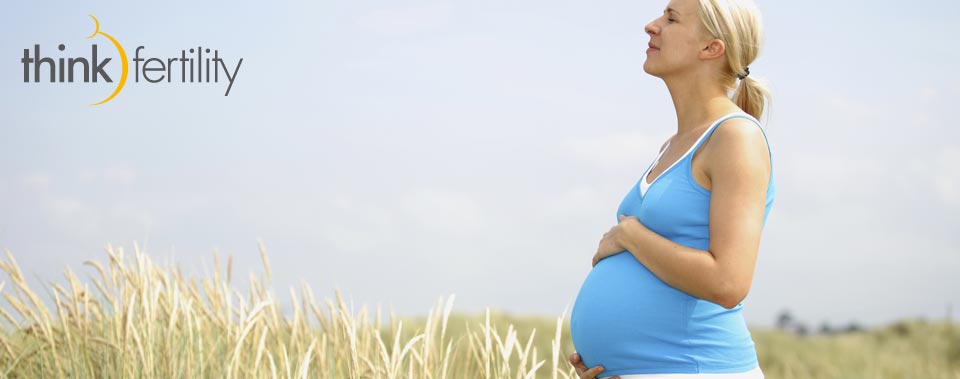Fertility Facts
The population of Australia is aging and fertility rates are below replacement level
- Australia’s birthrate peaked at 3.5 babies per woman in 1961 (pre-contraception) at the height of the ‘baby boom’
- declined to 1.7 in 2002 due to available contraception
- rose a little to 1.96 in 2008, and has been declining since
- the population replacement rate is 2.1
- Australia’s rate is only moderately low compared to some European countries with birthrates of 1.3 to 1.6 and to Japan, Singapore and Hong Kong which are lower still
ABS total fertility rate (births per woman) Australia 1930 to 2010
- The number of babies born following assisted reproductive treatment rose by 45% between 2004 and 2008 in 2008 it was estimated 3.3% of children born in Australia ART children were the result of assisted reproductive treatment the rate of multiple birth deliveries from ART has dropped from 16.4% in 2004 to 8.4% in 2008
- The 2008 increase in birth rates was predicted in the 1980s – it illustrates a phenomenon called ‘boom, bust and echo’ where a peak in population is followed by a decline in the fertility rate and an echo peak 20 to 30 years later.
- baby boomers born in 1940s-50s-60s had children in 1970-80s
- their children form the ‘echo’ peak which is now in their 30s
- there are more women in their 30s now, and this age group is having babies
- It is not attributable to the baby bonus, but rather to a healthy economy, more information on fertility and governments and society placing a higher value on parenting.
- It is predicted that the 2008 “baby boom” won’t last and Australia’s birthrate will plateau or decline – generation Y has very different ideas. By 2025, it is predicted that 1/3 of households will be singles, 1/3 will be couples, and only 1/3 will include children.
Age of first births in 2009
- 30.6 for mums, 32.9 for dads
- in 1979 most women had babies in their 20s by 1999 nearly half of all births were to women aged over 30 years
ABS age-specific fertility rates (births per 1000 women) Australia 1930 to 2010
Trends in Australian society
Meeting later and marrying later
- couples cohabit then marry when they decide they want children
- first marriage rates for under 30s dropped in the last 10 years:
- first births are later, with a longer wait after marriage
- delaying a first child means fewer second and third babies
- in the 1970s the peak age for having babies was 20-25 – and they had babies after 1 year of marriage, but in 2000 the age range rose to 25-35 with babies after 3 years
Reduced partnering and increased divorce and separation
- 1/3 of men will never marry (by choice or circumstance), 1/3 of married men will divorce
- there are plenty of single men across the age groups
- but overall there is an excess of women in their 30s
Smaller families
- women and men are having fewer children than they say they want
- there are more single and couple households
- decline in teenage births
- the average new mum is now over 30
- rich women and poor men have fewer children
Women are delaying family formation for reasons other than ‘career and travel’: women are acting responsibly
- need a financially secure partner
- need a stable dependable relationship
- need a partner willing to commit to family formation
- need to be sure they could raise a child alone if their circumstances changed
It’s society’s issue, not a women’s issue
Economic factors
- Australia’s economy needs women to both work and have children
- two wages are needed now to pay a mortgage for even a modest home
- women have been entering the workforce and remaining there
- women now want financial independence before they will have children
- jobs are more often casual or contract, so loans are hard to get as banks only take into account the lowest hours
- incomes are less secure – ‘waiting to see if the job situation improves’ can mean long delays in family formation
- women are increasingly the breadwinners or the higher earner in a couple
- financial commitments may depend on her income; studies indicate that his career is often the deciding factor in delaying children, not hers
- more jobs require qualifications so more women are completing study
- women are more qualified, but less likely to use their qualifications than men especially once they have families.
- increased education means higher HECS debt and difficulty getting a loan/mortgage
- future HECS debts count in mortgage calculations, even if not payable yet
- government paid parental leave helps, but is not at the person’s income rate
- extra paid maternity leave is still rare and extra paid paternity leave even rarer
- more childcare places but
- no recognition of the high cost of providing baby care
- long waiting lists
- childcare is expensive for one child, prohibitive for 2 or 3
- childcare services don’t attract a tax rebate for 18 months
- childcare is inaccessible if working hours are long, variable or not Monday to Friday.
Social factors
- education extends dependence and delays responsible adulthood
- “failure to launch”- men are taking longer to grow up and commit
- studies indicate that the main reason for not becoming pregnant is the absence of a partner or being unable to find a partner who is prepared to commit to having children, rather than personal ambition
- men and women want to feel securely independent before they have children, and that often depends on the male partner having stable employment
- definitions of success and happiness for both men and women include a career as well as a family
- it is more acceptable for women to choose to be single and childless
- the nuclear family is less common; combined families, step families and de facto relationships are more common
- families are geographically spread and grandparents are not there for emergency childcare even if they are close, and Grandma may still be working
- meeting later and marrying later, first marriage rates for under 30s dropped in the last 10 years:
- later first births, longer wait after marriage
- couples cohabit then marry when they decide they want children
- in 1970s the peak age for having babies was 20-25 – and they had babies after 1 year of marriage,
- but in 2000 the age range rose to 25-35 with babies after 3 years
- now over half of babies are born to women over 30
- reduced partnering and increased divorce and separation
- 1/3 of men will never marry (by choice or circumstance), 1/3 of married men will divorce
- there are plenty of single men across the age groups
but overall there is an excess of women in their 30s


